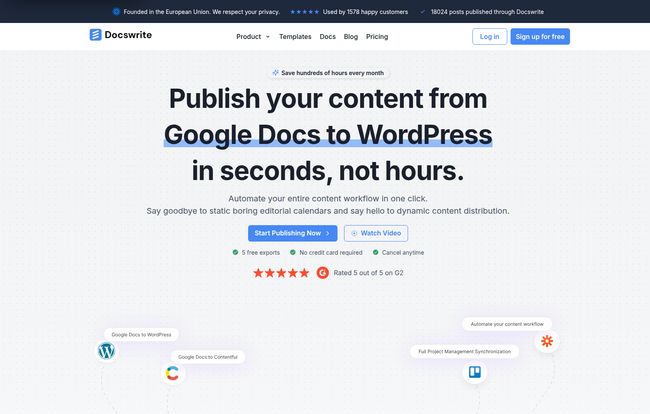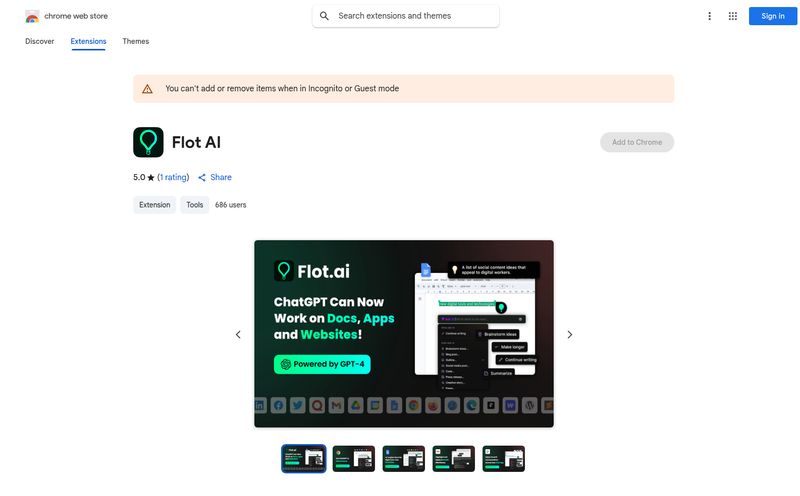If you're in the content or SEO game, you know the pain. You’ve just put the finishing touches on a masterpiece in Google Docs. The research is solid, the writing sings, and the client is happy. And then… it begins. The soul-crushing, mind-numbing, copy-paste dance of death into the WordPress block editor.
You copy the text. The formatting goes completely haywire. Your H2s are now bolded paragraphs. Your beautiful italics have vanished into the ether. Then comes the images. Oh, the images. You have to download every single one, rename them for SEO, upload them one-by-one to the WordPress media library, and then painstakingly insert them back into the post. By the time you’re done, an hour has passed, your will to live has evaporated, and you've forgotten what the article was even about.
I’ve lived this nightmare more times than I can count. It’s the unglamorous grunt work that eats into time I should be spending on keyword research, strategy, or you know, getting more clients. So when I heard about a tool called Docswrite that promised to turn this hour-long ordeal into a matter of seconds, my cynical SEO heart skipped a beat. A tool to automate publishing from Google Docs to WordPress? Sounds too good to be true. But I had to check it out.
So, What is This Docswrite Thing, Anyway?
In the simplest terms, Docswrite is a magic bridge. It creates a direct pipeline between your Google Docs and your WordPress site. No more manual copy-pasting. No more formating headaches. It’s designed to take your finished document and push it directly into a new WordPress post, with all the important bits and pieces intact. We’re talking images, headings, meta descriptions, categories, tags—the whole shebang.
The core promise is right there on their homepage: “Publish your content from Google Docs to WordPress in seconds, not hours.” That's a bold claim, but frankly, it’s exactly the kind of claim that gets my attention.

Visit Docswrite
My Favorite Features (The Stuff That Actually Matters)
A tool can have a million features, but only a few really change your life. After kicking the tires on Docswrite, a few things stood out as genuine game-changers for my content workflow.
The One-Click Magic Button
This is the main event. You connect your WordPress site (or sites), open your Google Doc, and with a click inside the Docswrite add-on, you send it over. It’s… startlingly simple. The first time I did it, I kept waiting for something to break. But it just worked. The draft appeared in my WordPress dashboard, looking almost exactly like it did in the Google Doc. It felt like skipping the entire security line at the airport and just walking onto the plane.
It Actually Cares About Your On-Page SEO
Here’s what really sold me as an SEO professional. Docswrite doesn’t just dump text. It integrates directly with the most popular SEO plugins, namely Yoast SEO, RankMath, and Newspack. This means you can set your focus keyword, slug, meta title, and meta description right from within Google Docs. When you publish, all that data is perfectly populated in the right fields in WordPress. That alone saves a solid 5-10 minutes of annoying, fiddly work per post. It’s a small thing that adds up to a huge time-saver.
Taming the Image Beast
I have a special kind of hatred for manual image handling. It's just so tedious. Docswrite pulls the images directly from your document, and it compresses them automatically before uploading. Anyone who's ever fought with Core Web Vitals or a slow-loading site knows how critical image optimization is. This feature is a godsend. It saves you the step of running images through a tool like TinyPNG and keeps your site running fast without you even thinking about it.
Playing Nice with Your Project Management Tools
If you're part of a larger team, your content probably doesn’t just live in Google Docs. It lives in Trello boards, Monday.com, Airtable, or even just a complex Google Sheet. Docswrite can pull from these sources too, and with its Zapier integration, you can build some seriously powerful automations. Imagine a workflow where moving a Trello card to the “Ready to Publish” column automatically sends the linked Google Doc to the right WordPress site. That's not just saving time; that’s building a scalable content machine.
Let's Talk Turkey: The Pricing Breakdown
Alright, so it's cool. But is it worth paying for? As always, it depends on your scale. Here’s a quick look at their plans (they also offer a discount for annual billing, which is nice).
| Plan | Price | Best For |
|---|---|---|
| Start-Up | $29 / month | Solopreneurs and small blogs. You get 75 docs/month and can connect up to 3 WordPress sites. |
| Business | $49 / month | Content teams and agencies. Unlimited docs, 10 sites, and the crucial Zapier/API access for real automation. |
| Enterprise | $89 / month | The big dogs. News sites, large enterprises. Unlimited everything and priority support. |
In my opinion, the Business plan at $49/month is the sweet spot for any serious content operation. The unlimited publishing and Zapier access are what transforms this from a convenience tool into a core part of your workflow automation.
The Not-So-Perfect Parts
No tool is perfect, and it’s only fair to point out the trade-offs. The Start-Up plan, while affordable, has a cap of 75 articles per month. For a prolific blogger or a small agency, you might hit that limit faster than you think.
The other thing is that the most powerful automation features, like the Zapier and API access, are locked behind the more expensive Business and Enterprise plans. This is pretty standard for SaaS tools, but it's something to be aware of. If you're just looking to solve the basic copy-paste problem, the Start-Up plan is great. If you’re looking to build an automated content engine, you’ll need to budget for the higher tier.
The Final Verdict: Is Docswrite Worth Your Money?
Let's do some quick back-of-the-napkin math. Docswrite claims to save 40 minutes per post. I think that's a bit optimistic for a simple post but maybe even an underestimate for a long, image-heavy article. Let’s be conservative and say it saves me 20 minutes per post.
If I publish 10 articles a month, that's 200 minutes saved—over 3 hours. What’s my hourly rate? It’s a lot more than the $29 or $49 this tool costs. From a pure ROI perspective, it's a no-brainer. This isn't an expense; it’s an investment in getting my time back.
So, yes. For freelancers, SEO agencies, and content teams who spend any significant amount of time in that Google Docs-to-WordPress no-man's-land, Docswrite is absolutely worth it. It's a simple, focused tool that solves one of the most persistent, annoying problems in our industry.
Frequently Asked Questions About Docswrite
- Does Docswrite work with any WordPress theme or page builder?
- It's designed to work with the native WordPress block editor (Gutenberg). It should be compatible with most modern themes. If you're using a complex page builder like Elementor or Divi, your mileage may vary as those have their own ways of handling content structure.
- What happens to my formatting and comments in Google Docs?
- It does a surprisingly good job of preserving basic formatting like headings, bold, italics, lists, and links. It doesn't, however, transfer over Google Docs comments, which makes sense as those are for collaboration, not for the final published post.
- Is it difficult to set up?
- Not at all. You install the Google Docs add-on and the WordPress plugin, connect your site with an API key, and you're basically ready to go. The process takes just a few minutes.
- Can I use Docswrite for my client sites?
- Yes, absolutely. The different plans allow you to connect multiple WordPress sites, making it perfect for agencies or freelancers managing several client blogs.
- What if my site is not on WordPress?
- Currently, Docswrite is specifically built for the Google Docs to WordPress pipeline. If your site is on another CMS like Ghost, Webflow, or Squarespace, this won't be the right tool for you.
Escaping the Content Treadmill for Good
At the end of the day, tools like Docswrite are about more than just convenience. They're about buying back your most valuable asset: time. Every minute you're not wrestling with the WordPress editor is a minute you can spend creating better content, analyzing your traffic, building links, or just… taking a break. It helps you get off the content production treadmill and back to the strategic work that actually moves the needle. And for me, that's worth every penny.



